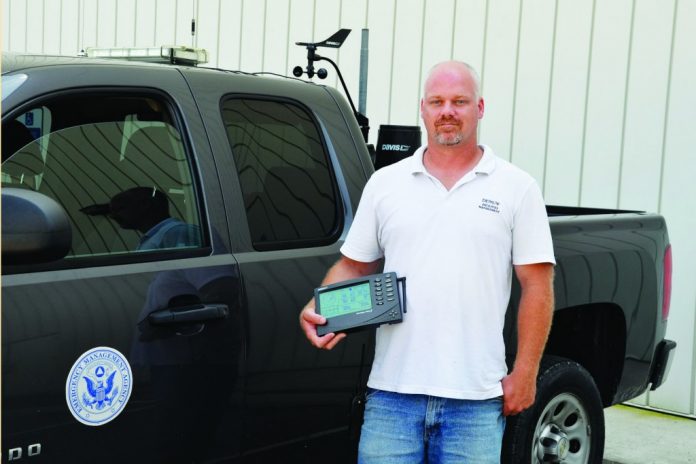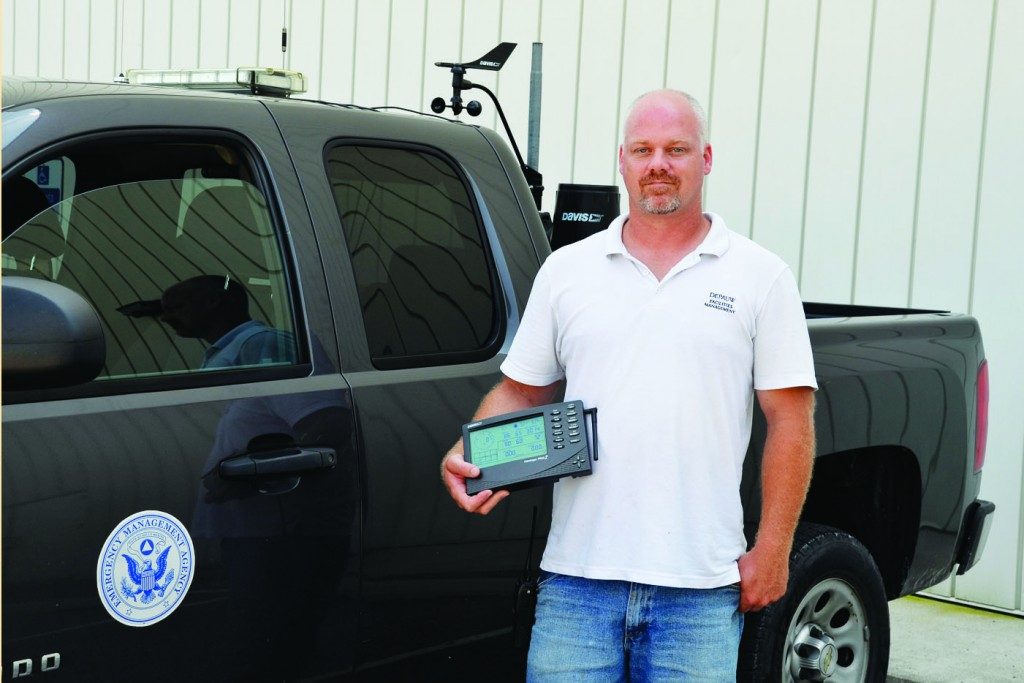

At 6-years-old Christopher Edwards was at the Danville Fair, leaning on a nail on the main post of a horse barn. Suddenly, lightning struck the building, flinging Edwards a few feet across the barn and leaving his arm different shades of purple.
“It kinda sparked my interest; I guess you could say,” joked Edwards, a DePauw Facilities Management employee.
After being struck by lightning, Edwards began to teach himself meteorology. “I read everything I could get my hands on,” he said. After a bit of self-teaching, the National Weather Service (NWS), a government institution with a primary task of providing warning signs in time of severe weather, began to educate Edwards more on how to analyze weather conditions.
The NWS has a radar net across the United States composed of forecast offices equipped with surveillance radars. However, radars don’t give a full picture of what is happening with the storm. While they may be useful in forecasting severe weather, radar waves go in a straight line, which fails to account for the Earth’s curvature. For this reason, you have blind spots from the radar.
In order to address this shortcoming, the NWS uses a program called SKYWARN, where meteorologists and specialists, like Edwards, train volunteers across the nation to become storm spotters. The program’s objective is to provide the NWS with information on local storms as they are taking place.
Edwards currently serves as the Severe Weather Specialist for the Putnam County Emergency Management Agency. Edwards’ responsibilities include training storm spotters, checking school “safe areas” in the county, conducting aerial and ground surveys after storms hit, and, of course, chasing down storms.
Throughout his career, Edwards has spotted 28 tornados, “give or take one,” he said.
Edward’s isn't the only storm enthusiast on campus, DePauw senior Frederick Soster is another storm spotter.
At an early age, Soster was terrified of storms. It wasn’t until his family drove through one, that happened to have tornadoes, did Soster’s fear turn into fascination.
Soster is a trained storm spotter and illustrates the important role storm spotters play in helping the NWS issue timely warnings. “The sky is real time. It takes a radar a couple of minutes to pick up what is happening on the ground,” Soster said. Low top supercells, tornado-producing storms occurring at low altitudes, oftentimes do not show up on the radar. “Our reports help the NWS deliver accurate information to the public that can potentially save lives. It is really rewarding; I like doing it,” said Soster.
When it comes to actually chasing a storm, Edwards and Soster both highlighted the importance of preparation. “You have to have your car ready: make sure you have gas, check that your tires aren’t about to blow…and that you are wearing appropriate clothing,” said Soster.
He also admitted that most of the times you go out to spot a storm, “you don’t see much, but every time it is a learning experience that better prepares you for the next [storm]”.
